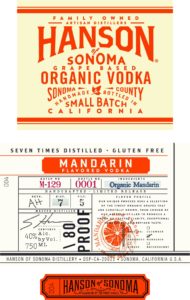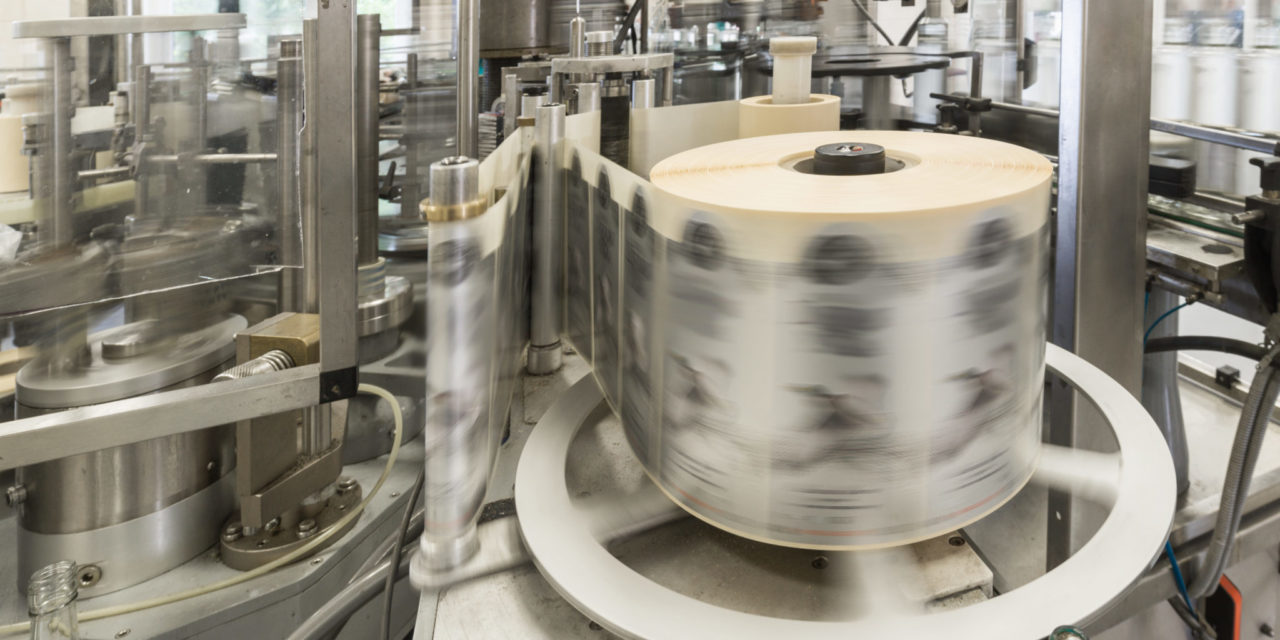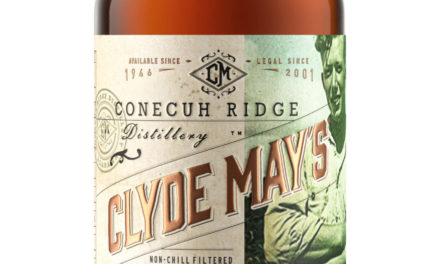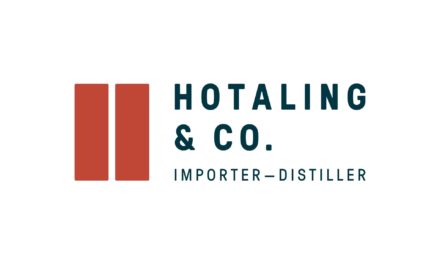Your label is a consumer’s first glimpse into what your product is all about. And while its design is what attracts buyers, the information it provides is what ultimately seals the deal. Some pieces of information are mandatory, some are optional, but all are important.
Since there are so many scenarios regarding labeling, we’ll focus here on federal regulations for alcoholic beverages that will be distributed for retail or restaurant sales within the United States. The regulations for imports, exports, onsite- and in-state-only each have their own sets of rules.

“Consumer protection is the major takeaway.” —Tom Hogue, Alcohol and Tobacco Tax and Trade Bureau (TTB)
First Things First
If you’re a new producer, begin thinking about your label as soon as you’ve secured your business permits. The label approval process, from first design to applying with the Alcohol and Tobacco Tax and Trade Bureau (TTB), can take months. Aside from federal regulations, you’ll also need to abide by county and state laws. Contact the agencies that control those rules early on to ensure your label can be approved. The next step is a visit to the TTB’s website, which provides everything needed regarding mandatory and optional label information. The agency’s purpose is to ensure consumers know exactly what’s inside your container.
“Consumer protection is the major takeaway,” says Tom Hogue, TTB spokesman. “The first way you can do this is to make sure all the information on your label application is accurate and complete. And be cautious not to include anything that could be misleading to the consumer, as those items will be questioned.”
The approved label application is called a Certificate of Label Approval (COLA). Turnaround time to get one can vary, and with so many newer producers looking to enter the market, ensuring your label’s information is compliant with federal regulations from the get-go will not only speed up the process for you, but also for others waiting for approval behind you.
Following label approval, the verification phase can take place at any time. “During label approval, a lot of things can’t be verified,” says Hogue. “We want to ensure what’s on the label matches exactly what’s in the bottle.” This takes place through the Alcohol Beverage Sampling Program, where products are sampled in the marketplace or through product integrity investigations, which are conducted at an industry member’s premises.
Wine Label Requirements
TTB labeling regulations apply to fruit-based wines containing at least 7 percent alcohol, which includes hard cider. Mandatory items include brand name, class and type designation, numerical statement of alcohol content by volume (if more than 14 percent for wine; wine at least 7 percent up to 14 percent may use “table wine” for the statement; see “TTB Labeling: A Brief History” to learn more), net contents (stated in metric units such as 750 mL), government health warning statement, name and address of the bottler, and a declaration of sulfites (if it contains 10 or more parts per million of sulfur dioxide).
It’s up to the producer whether to include other items. Generally, the more premium the wine, the more items are needed to properly inform consumers. Following are the most common examples of what can be included. Further details are available on the TTB website.
Vintage date. A vintage date states the year the fruit was harvested. If present on a wine label, an appellation of origin is also required. For wine labeled with an appellation that’s also a country, state, county, or the foreign equivalent, 85 percent of fruit must be from the labeled year. For wine labeled with an American viticultural area (AVA) as the appellation of origin, 95 percent of fruit must be from the labeled year.
Appellation of origin. This can be a country, state, county, or geographic region, and at least 75 percent of fruit must be from the labeled appellation.
Viticultural area. If an American viticultural area (AVA) is included, at least 85 percent of the wine must have been produced from fruit grown in that area. The TTB website has a comprehensive list of approved AVAs. If the AVA isn’t required and is provided as additional information, the wine must still meet the 85 percent benchmark.
Varietal designation. This expresses the name of the dominant grape variety used. At least 75 percent of juice must be that variety, and this information must appear on the front label.
Estate bottled. This means the wine contains only fruit grown on land owned or controlled by the producer, which must be located in an AVA, and the label must state the AVA. The wine must have been produced and bottled on the winery’s premises, and the winery and vineyard(s) must be in the same AVA listed.
Produced and bottled by. At least 75 percent of the wine must have been fermented at the stated address. This can get tricky, as many smaller producers bottle their wine offsite (at a custom crush facility, for example). If that’s the case, the winery that produced it can apply for a DBA or alternating proprietorship.
Malt Beverages
This category includes all products made from the alcoholic fermentation of malted barley and hops, such as beer, ale, lager, flavored malt beverages, and even “near beer.” Because these types of beverages can include out-of-the-ordinary ingredients, they have different regulations than wine. Mandatory items include brand name, class designation, net contents (pints, fluid ounces), health warning statement, and name and address of the bottler.
Here are more labeling options.
Draft/Draught. This means the product has been drawn from a cask or keg. Historically, these products weren’t pasteurized and another method of inhibiting bacteria growth was used. “Draft brewed” or “draft beer flavor” can appear on cans or bottles if the label states the beer is pasteurized. For beer packaged in one-gallon or larger containers, the term “draft” or “draught” may be used if it’s meant to be dispensed using a tap or similar device.
Name and address. The address of the bottler’s principal place of business may be used instead of the actual location where bottling took place.
Alcohol content. This is required on flavored malt beverages that derive alcohol from added flavors.
Lite/light/low-carb. If used, a statement of average analysis must appear on the label, including amount per serving of calories, carbohydrates, protein, and fat. Low-carb can only be used with a statement of average analysis if the product contains no more than 7 grams of carbs per 12-ounce serving.
Class designation. Examples are beer, ale, and lager. Ale, stout, and porter must be fermented at a high temperature. “Wheat beer” must be made from a base of at least 25 percent malted wheat. If there are spices, fruit, honey, or other flavors involved, a statement of composition is required. Examples are “premium malt beverage with natural flavors” or “ale fermented with spices.” A malt beverage must derive at least 51 percent of its alcohol content from brewing ingredients.

Distilled Spirits
Standard distilled spirits must be bottled with at least 40 percent alcohol by volume (80 proof). Cordials, liqueurs, and specialty products have no minimum or maximum alcohol content requirement. Brand name, name and address of bottler, alcohol content (in degrees; proof is optional), health warning statement, net contents, and class designation are required. TTB also regulates premixed cocktails and “distilled spirit specialties” (spiced rum, for example).
Gin. Gin must derive its main flavor from juniper berries and the commodity from which it was distilled, such as grain.
Vodka. Defined as a neutral spirit (produced from any material at or above 190 proof), must also show the commodity from which it was distilled.
Rum. Rum must be made from fermented juice of sugar, sugar cane syrup, sugar cane molasses or other sugar cane byproducts.
Additional Considerations

“For new labels, give yourself six months for the entire process.” —Ann Reynolds, Wine Compliance Alliance
There are universal requirements regarding label readability that dictate font size, what needs to be in bold, and where things should be located. It’s a lot to take in. That’s why it’s smart to work with professionals familiar with labeling laws prior to submitting your application. Sometimes, designers or printers will have access to this information; there are also companies that specialize in label regulation compliance.
Ann Reynolds, CEO of Wine Compliance Alliance in Napa, Calif., is the author of The Inside Story of a Wine Label. Her company works with wineries to manage compliance for federal, state, and local agencies, and includes training so the wineries can later do it themselves. Her book, written for winery workers and wine enthusiasts, clearly outlines what’s required as well as regulations regarding optional items.
“A main consideration for wineries is non-required items,” says Reynolds. “Be familiar with the blend, what the percentages are, and where the grapes are from. The label will be driven by the blend.
“Another top consideration is scheduling with a printer. The label needs to have federal approval before it can be printed,” she adds. “Plan ahead and, when it’s close to done, submit it for approval, allowing time before the scheduled print date. For new labels, give yourself six months for the entire process.”
Says Heather Chartrand, COO of Watermark Labels in Lodi, which works mostly with local, boutique wineries, “Sometimes, people get confused with where to put things. That’s why it’s good to work with someone who’s done this type of thing before, and why it’s important to choose a vendor who knows the TTB rules. It saves money in the long run.
“Nobody wants to have to do a label twice because of a simple mistake,” she adds. “Don’t try to figure it out yourself. It’s worth having someone double-check.”
The TTB is always working to make the label approval experience as smooth as possible, but there are still setbacks. “We’re still seeing a 40 percent error rate,” says Hogue. “A common mistake is a discrepancy between what shows up on the label image versus what you’ve described in the application.”
At press time, turnaround from application to approval ranged from 12 to 15 days, on average. “This is a vast improvement over the last couple of years,” says Hogue. “We’ve hired more people, improved systems, and have a list of allowable changes. We want to save people time and trouble, and to reduce the burden on the industry while providing consumers with what they expect,” he says. “We provide information online, take part in industry seminars, do outreach. We want people to get it right the first time—and we know they do, too.”
Getting label approval is an arduous process, but the results are rewarding, and seeing your product on the shelves of your favorite retailer or restaurant means you made it through.











